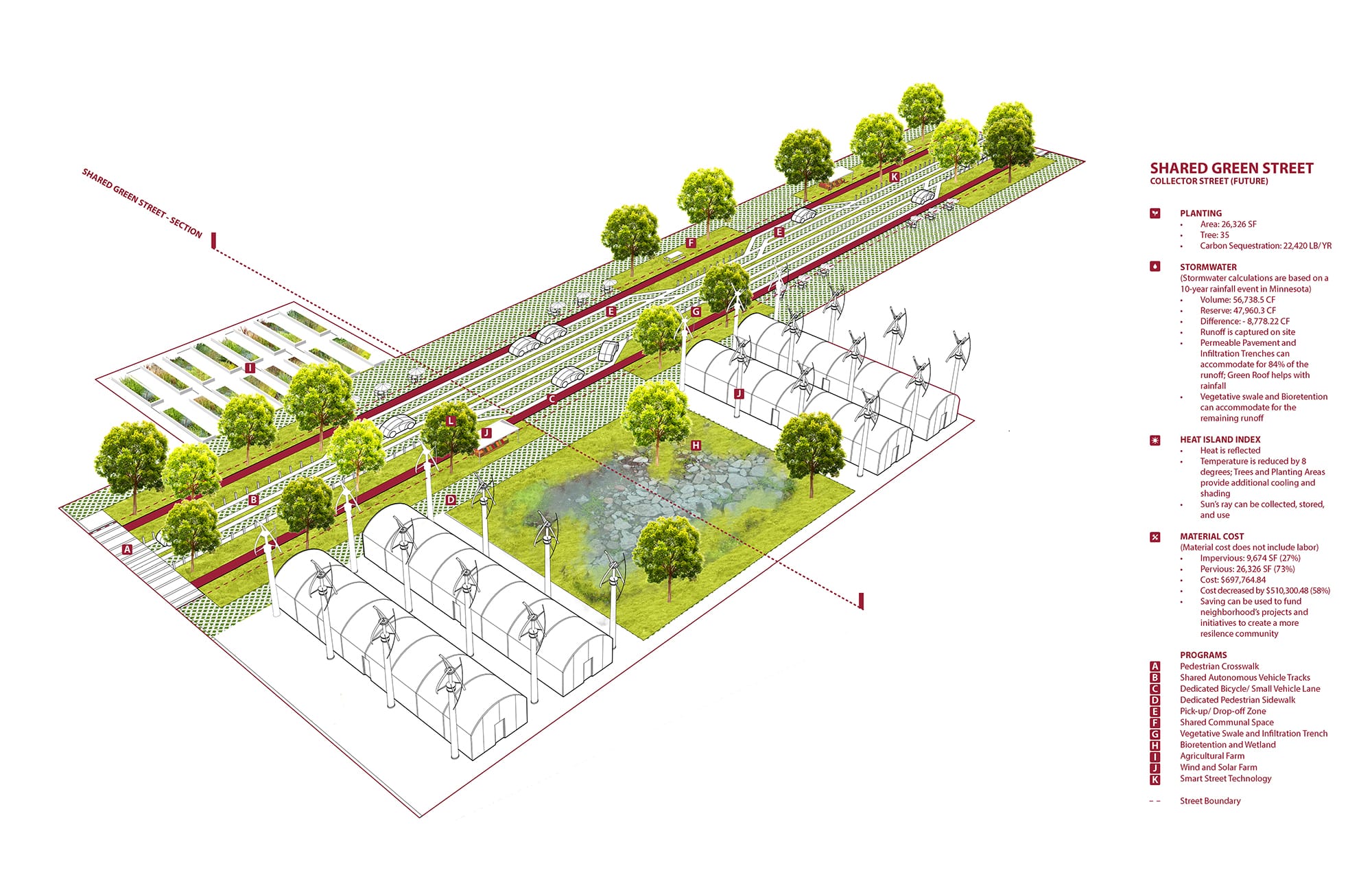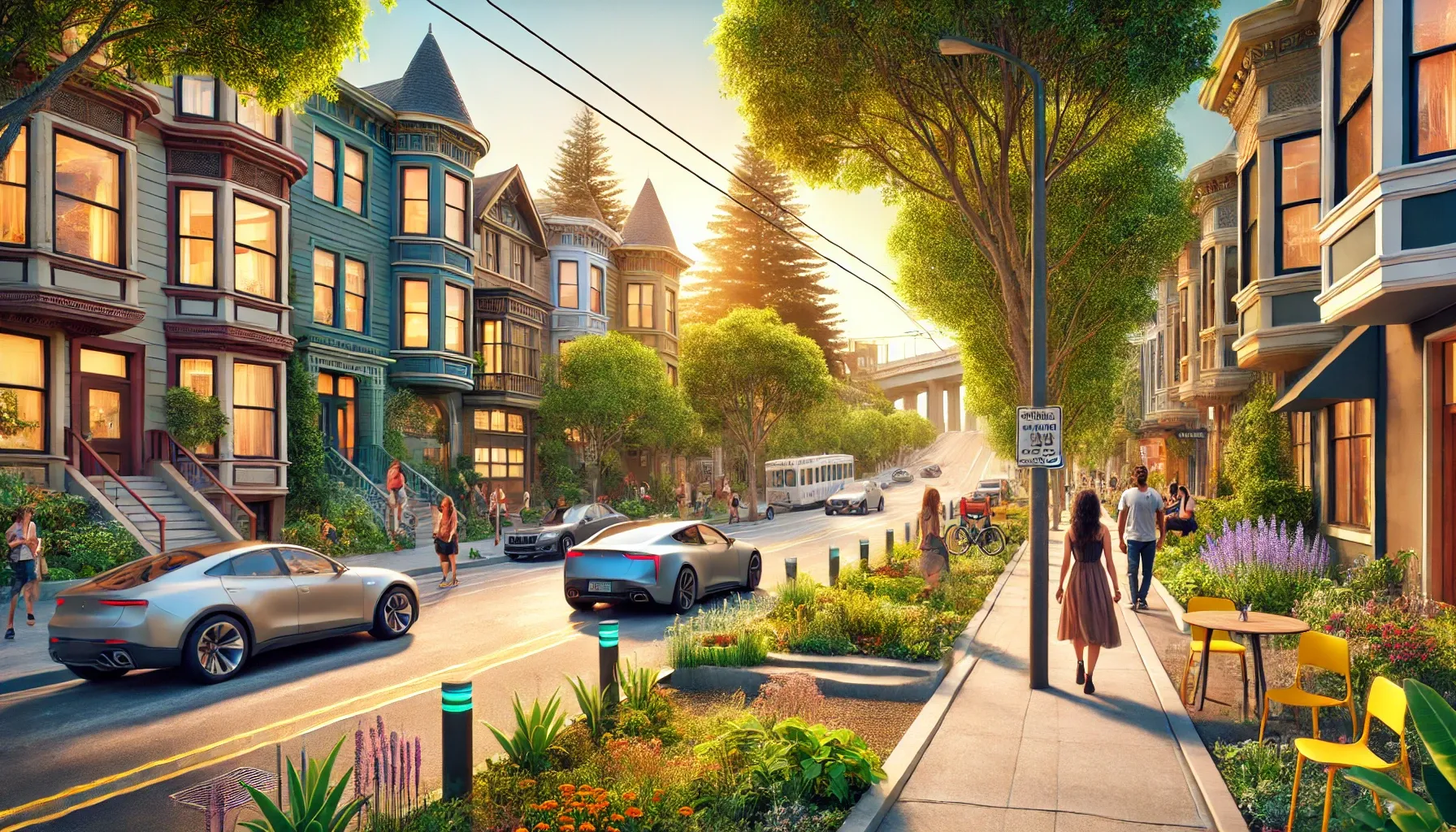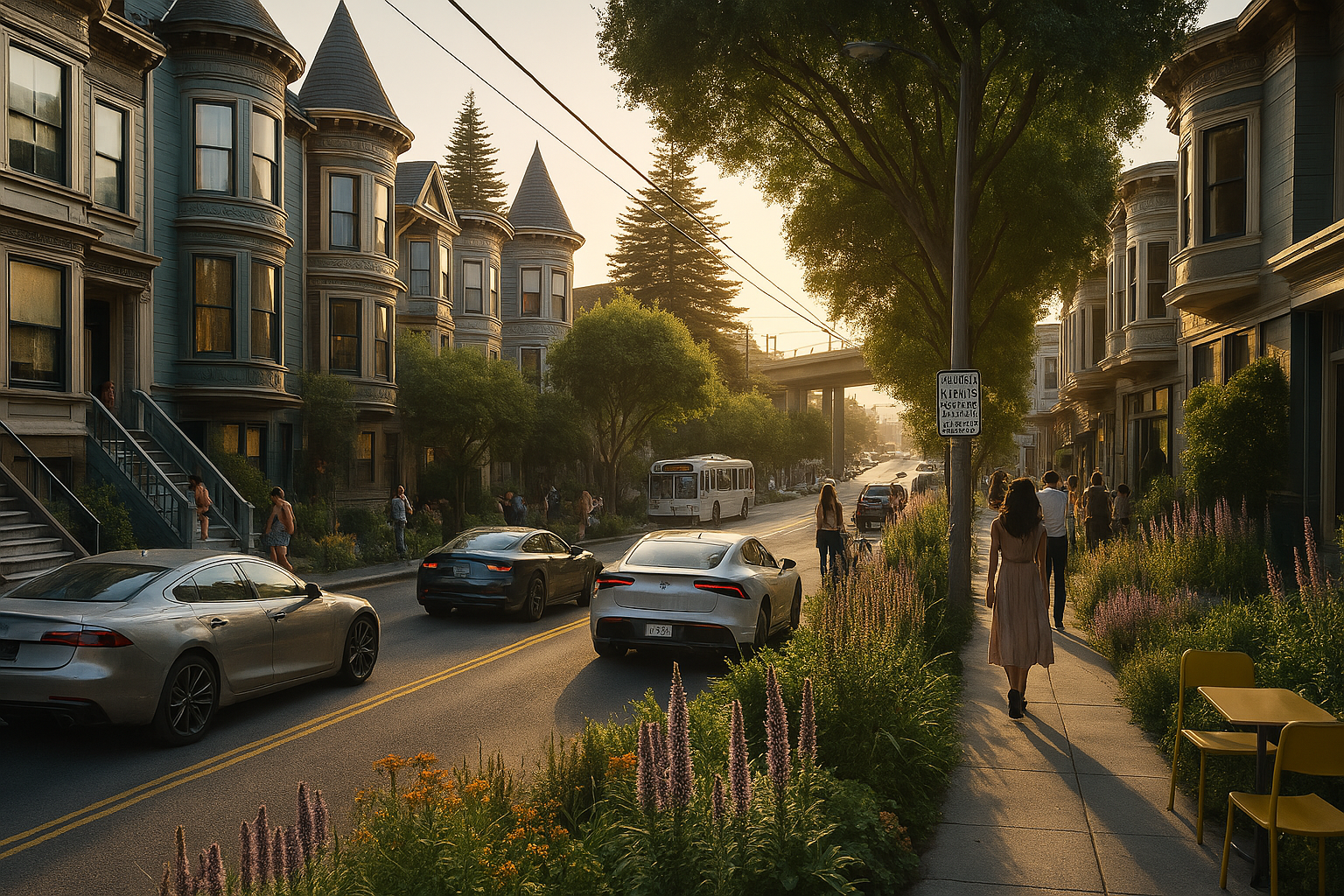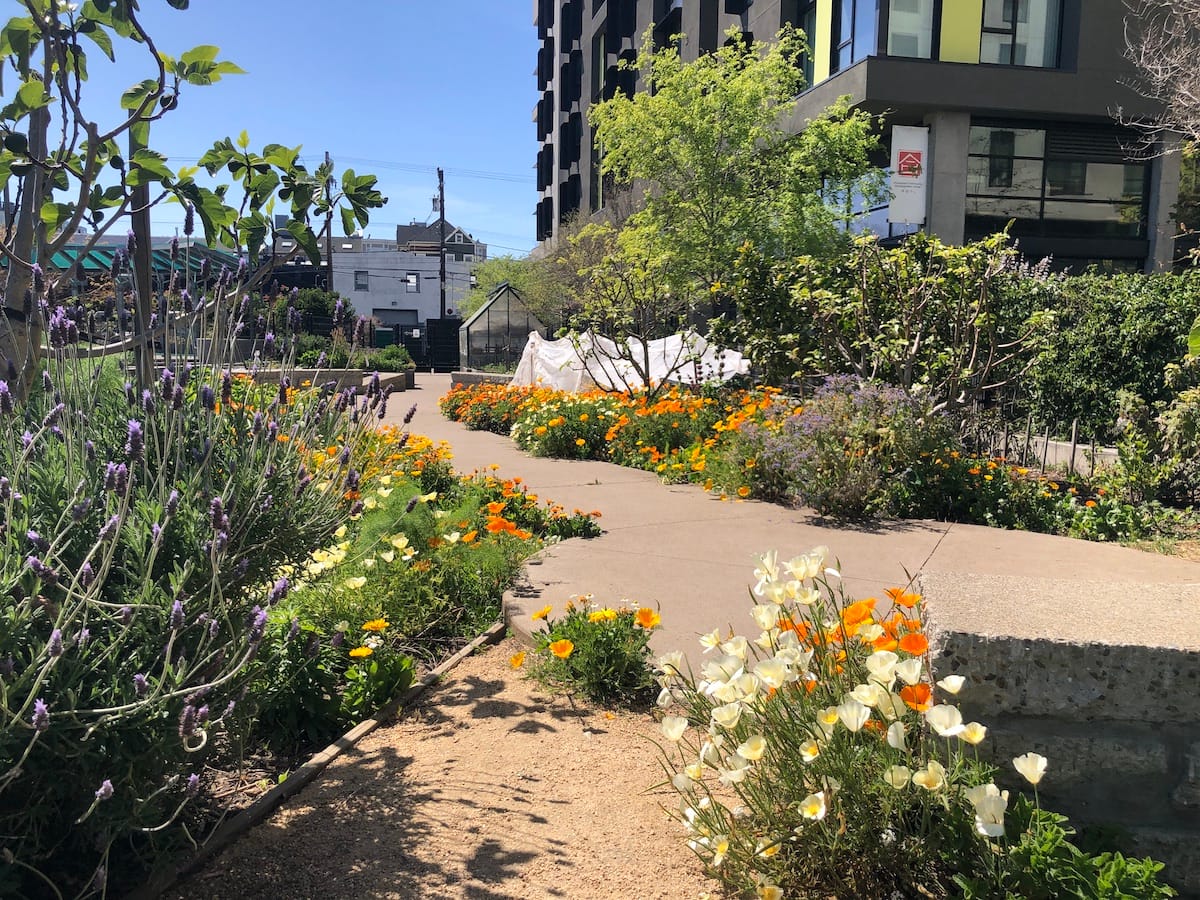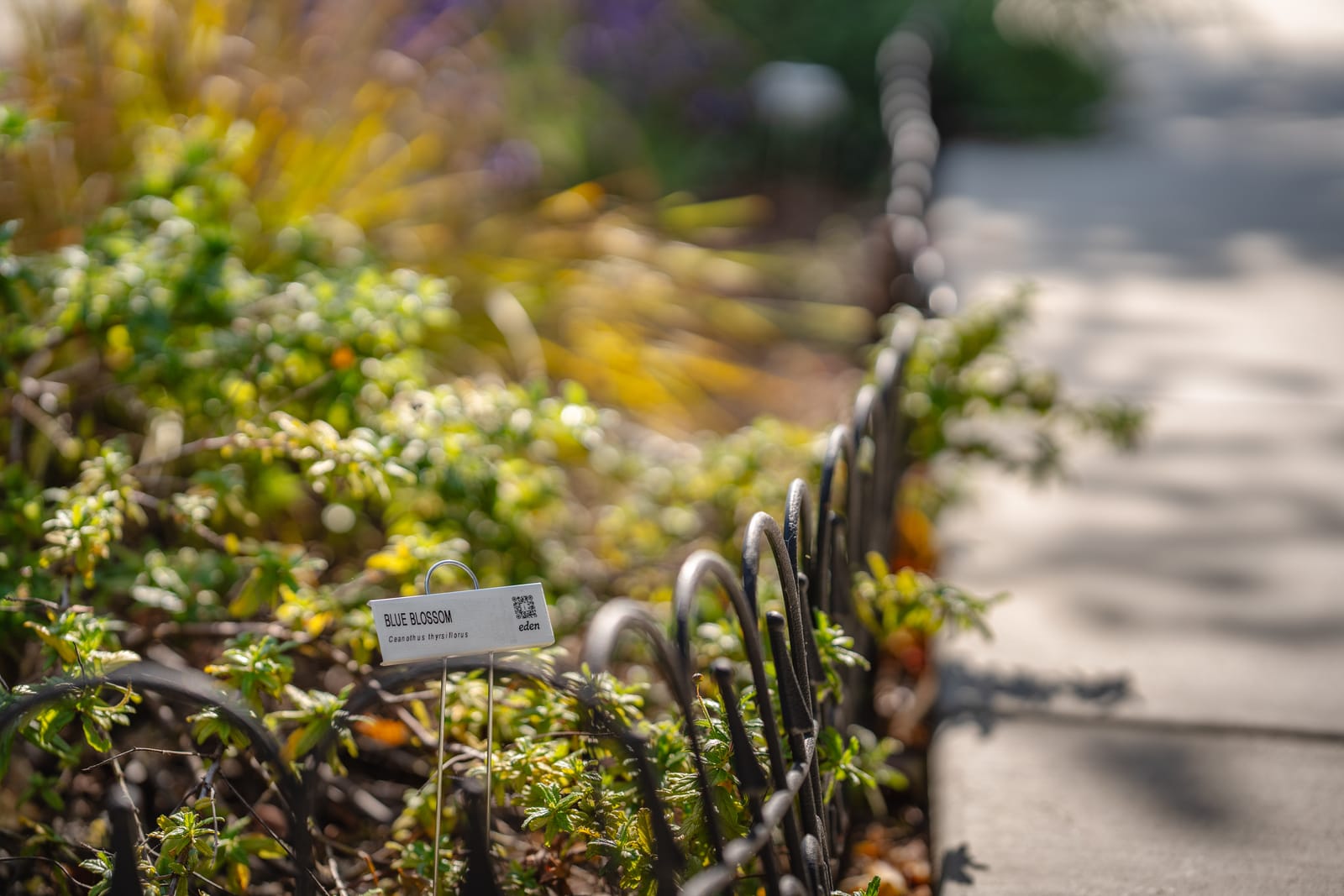A small patch of sidewalk could be your biggest contribution to a more beautiful San Francisco.
A. What is a sidewalk garden?
In San Francisco, the sidewalk isn’t just a strip of concrete—it’s an untapped canvas. A sidewalk garden refers to a landscaped section of public sidewalk space, typically where a strip of concrete has been removed and replaced with soil, plants, trees, and permeable materials. These gardens exist in the public right of way but are often maintained by the adjacent homeowner or business.
Common types of sidewalk gardens include:
- Tree wells enhanced with flowering groundcover or native grasses
- Permeable curb extensions that slow traffic and invite nature to the street edge:

Pollinator strips planted with drought-tolerant flowers and herbs:




Rain gardens that help capture and filter water runoff:
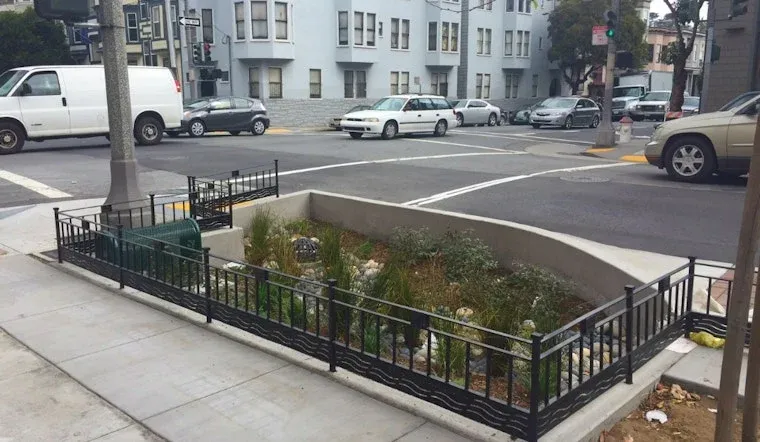
The benefits are enormous. A sidewalk garden:
- Reduces stormwater runoff and eases the burden on city drainage
- Cools the local environment, offsetting the heat retained by pavement
- Boosts biodiversity, offering food and habitat for pollinators
- Makes your block more beautiful and welcoming
B. Why they are so meaningful
I. The sidewalk is part of your home in the city
"Entrances should feel like a gentle passage, not a hard line."
— Christopher Alexander, architect and author²
"Gardens, scholars say, are the first sign of commitment to a community." — Anne Raver, garden writer
"Structuring space with plants is like drawing the perimeter with a pencil and then lightly erasing the line; you create a more diaphanous edge but still retain the strength of the space."
— Andrea Cochran, San Francisco-based landscape architect¹
These quotes all speak to the same idea: that the edge of a space—the point where public becomes private—is deeply meaningful. And in San Francisco, that edge is often the sidewalk.
We tend to think of our homes starting at the front door, but in a dense city, the sidewalk is your true front porch. It’s what neighbors walk by every day. It’s the first impression your home makes. And with a sidewalk garden, it can become something welcoming, beautiful, and intentional.
A well-designed sidewalk garden doesn’t just add greenery to the block—it adds value.
II. Imagine if every house in SF had one
Imagine walking through a city where every block had pockets of color, texture, and life along the street.
- A hummingbird darting through lavender.
- A child pointing at bees in a sunflower patch.
- Neighbors pausing to talk while watering their strip.

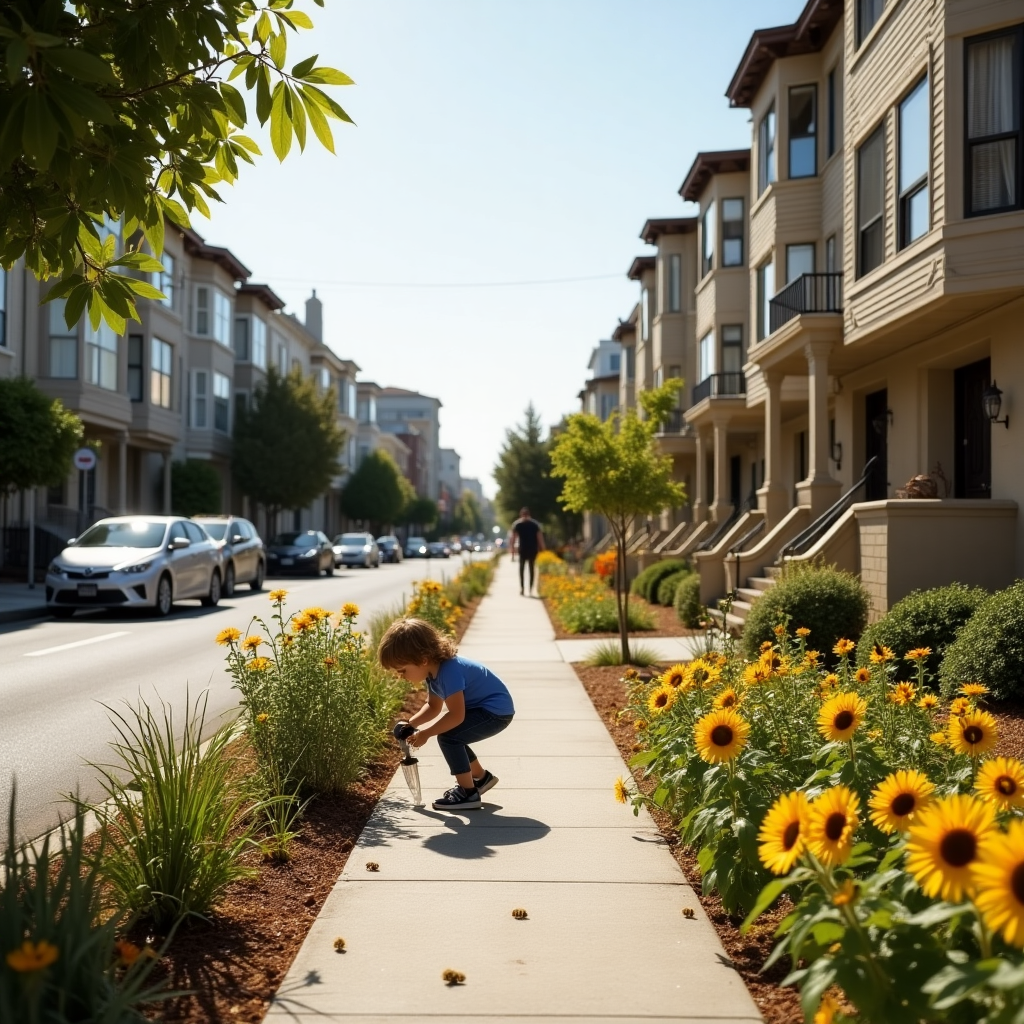
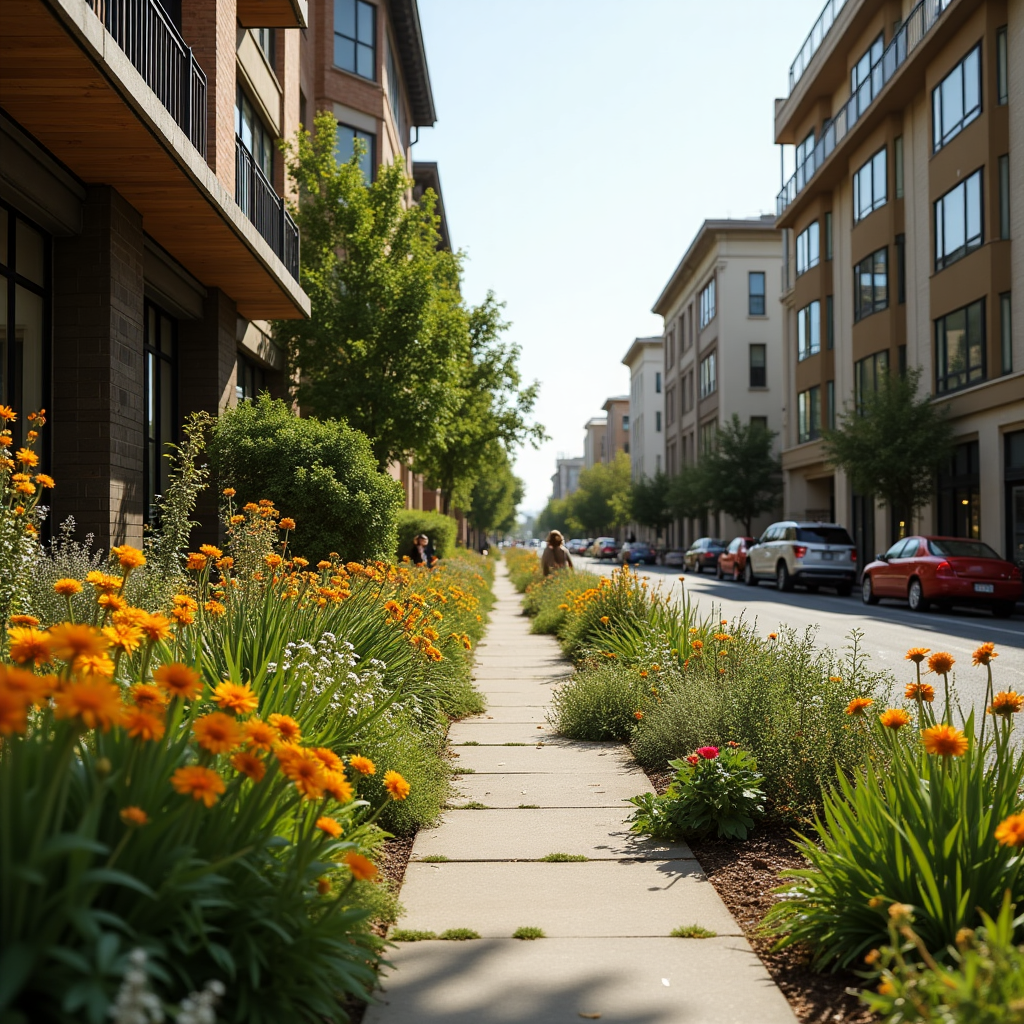
This isn’t just about aesthetics. Sidewalk gardens cool the city, manage stormwater, soften traffic noise, and boost mental well-being.
If you want to make San Francisco the most beautiful city in America, start at your own curb.
C. Why aren’t there more of them?
For something so beneficial, sidewalk gardens are surprisingly rare. Why?
1. The permit process is a pain
For something that adds so much value—to homes, neighborhoods, and the planet—it’s surprising how few sidewalk gardens you actually see across San Francisco. The reason? It’s not a lack of interest or beauty. It’s bureaucracy. The process of creating one is confusing, slow, and often discouraging. Between navigating city rules, figuring out what’s allowed, and coordinating the right team, most people give up before they even get a shovel in the ground.
- You need to submit a detailed site plan
- Maintain a minimum 4-foot pedestrian path
- Follow strict rules on plant species, visibility, and spacing
- And yes—you’re responsible for ongoing maintenance
2. Designing is hard
Most people aren’t landscape designers. Figuring out what’s allowed, what plants will thrive, and how to make it look good is tough—especially if you want to follow city rules.
3. Contracting is a hassle
Small jobs like sidewalk gardens often fall below the radar for professional landscapers. And if you do find someone, coordination and cost can become major headaches.
Here’s what it takes today:
- Confirm your sidewalk qualifies
- Measure the space and sketch a site plan
- Choose approved plants and materials
- Submit a Sidewalk Landscaping Permit to SF Public Works
- Wait for approval (weeks, sometimes months)
- Hire and manage a contractor
- Maintain your garden long-term
It’s doable—but it’s a lot. That’s where Eden comes in.
D. How Eden makes sidewalk gardens easy
We believe beautiful sidewalk gardens should be the default, not the exception. That’s why we’ve built tools to make the entire process simple, fast, and affordable.
i. Use Eden’s AI to determine what kind of sidewalk garden is allowed
- We scan your property details, local regulations, and utility maps to tell you what you can build—instantly.
ii. Use our AI garden builder to create a design you love
- Our design engine builds a garden tailored to your microclimate and style.
- You can choose a preset or generate a custom layout that meets SF permitting standards.
iii. Let Eden handle the paperwork
- We auto-generate your site plan, plant list, and permit application.
- Then we submit it directly to San Francisco Public Works on your behalf.
iv. One-click installation
- We coordinate with vetted local subcontractors to install your sidewalk garden while you’re at work.
- No coordination. No stress. Just come home to your sidewalk transformed.
Sidewalk gardens are small, but they mean something big.
The advent of autonomous vehicles (AVs) promises to transform urban landscapes, particularly in cities like San Francisco where space is at a premium. As AVs reduce the need for extensive parking infrastructure—thanks to their ability to self-park in more compact formations and the anticipated decrease in personal car ownership—the potential to repurpose these areas into green spaces becomes increasingly viable. Studies suggest that the widespread adoption of AVs could significantly diminish urban parking demands, opening opportunities for the development of sidewalk gardens and other communal green areas. San Francisco Chronicle
Envisioning this transformation, urban designers and architects have begun conceptualizing how streetscapes might evolve. For instance, the American Society of Civil Engineers discusses how autonomous vehicles will change road designs, potentially allowing for narrower streets and expanded pedestrian zones adorned with greenery. Home
They say your home is cared for. Your neighborhood is loved. Your city is alive.
Eden is here to make that transformation effortless—one square foot at a time.
